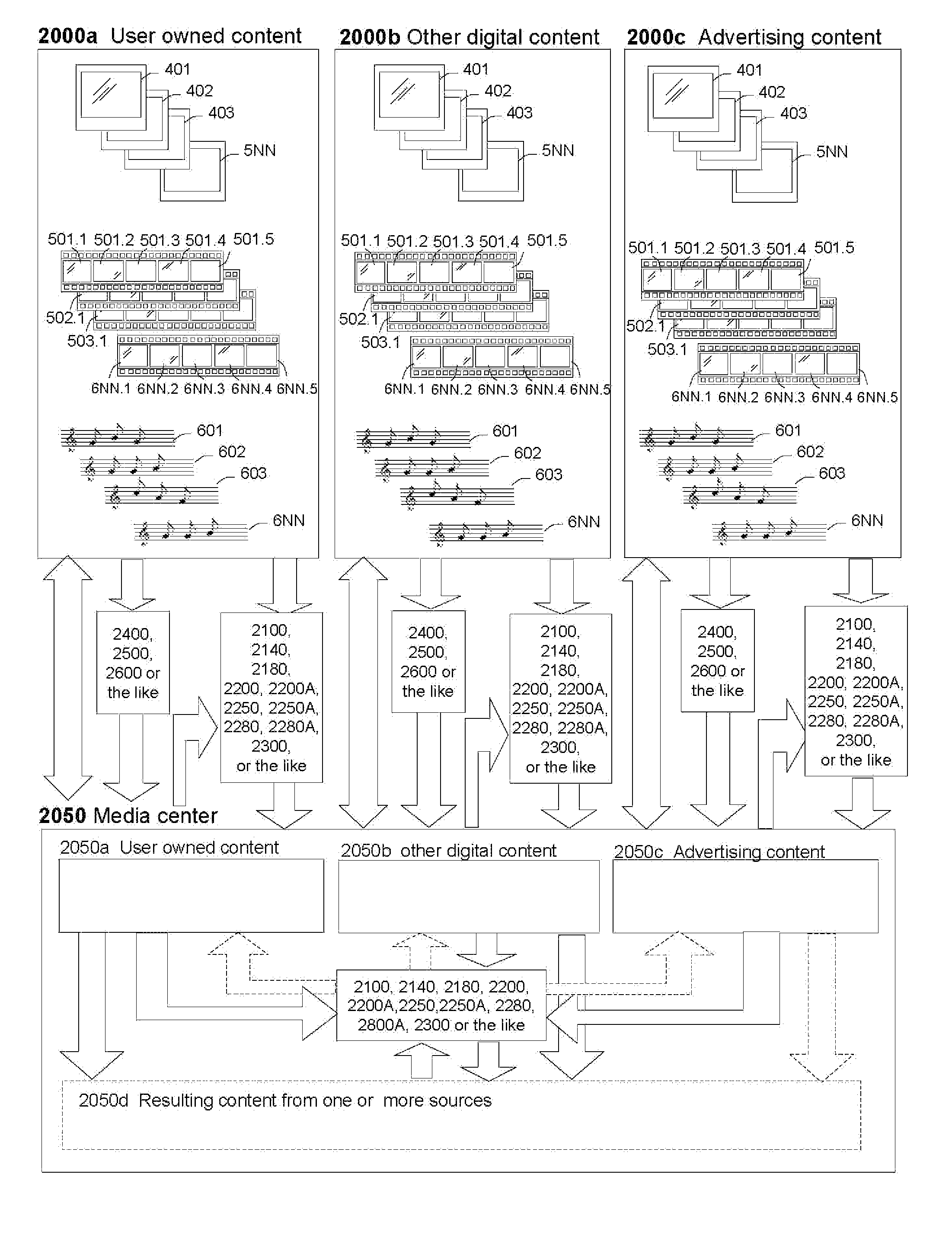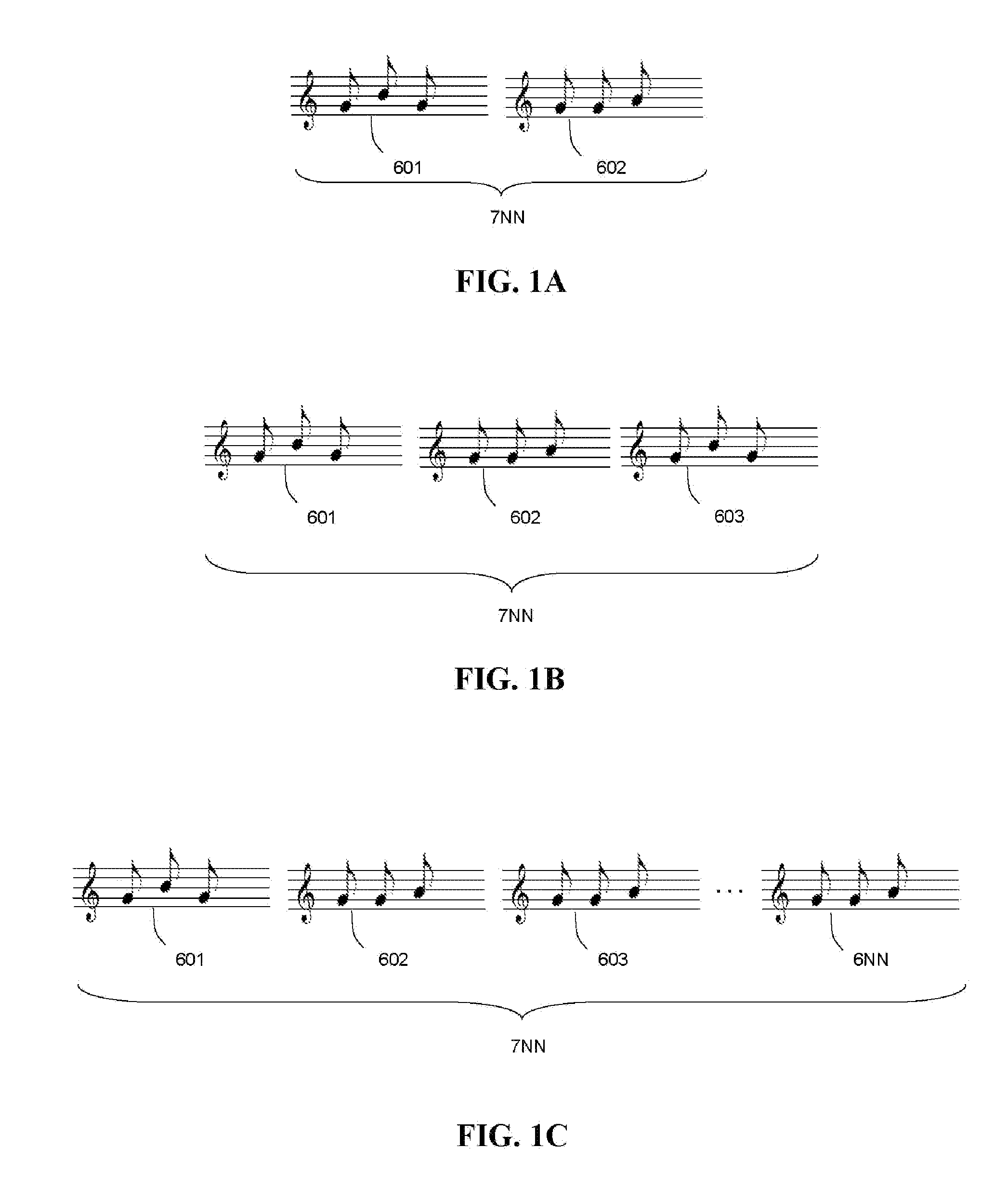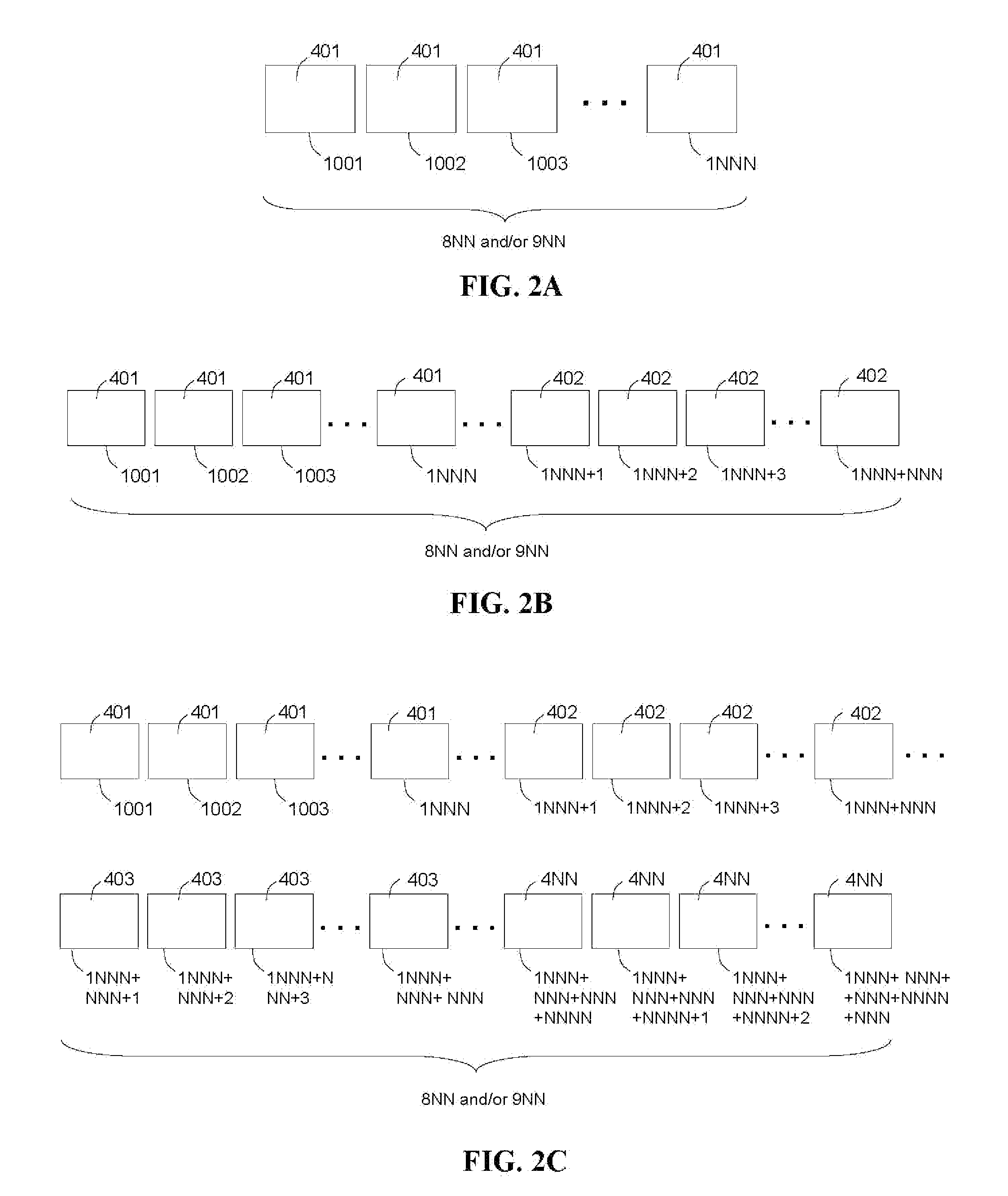Methods and Systems of Content Mobilization, Mobile Search, and Video Editing through a Web Interface
a content mobilization and mobile search technology, applied in the field of computer implemented methods and systems of content mobilization, can solve the problems of network capacity being a problem, predominance of “streaming” media, and e.g. real, and achieve the effect of reducing time and effort, improving information distribution efficiency, and distributing digital information inexpensively
- Summary
- Abstract
- Description
- Claims
- Application Information
AI Technical Summary
Benefits of technology
Problems solved by technology
Method used
Image
Examples
Embodiment Construction
[0175]With reference to FIGS. 1A through 1C, 2A through 2C, 3A through 3E, 4, and 5A through 5C, media files are depicted a pictorial diagrams.
[0176]In FIG. 1A, the methods and systems of the invention describe a combination of two audio files 601 and 602 into a single media file 7NN. In FIG. 1B, the methods and systems of the invention describe a combination of three audio files 601, 602, and 603 into a single media file 7NN. In FIG. 1C, the methods and systems of the invention describe a combination of a plurality of audio files 601, 602, . . . , 6NN into a single media file 7NN. In one embodiment, the audio files are music files or songs. In another embodiment, one or more the audio files are advertisements, marketing messages or promotions. In still other embodiments, the audio files are segments of radio shows, chapters of talking books, or any other audio files whatsoever. The media file 7NN may be any file format capable of recording audio including but not limited to AAC, AM...
PUM
 Login to View More
Login to View More Abstract
Description
Claims
Application Information
 Login to View More
Login to View More - R&D
- Intellectual Property
- Life Sciences
- Materials
- Tech Scout
- Unparalleled Data Quality
- Higher Quality Content
- 60% Fewer Hallucinations
Browse by: Latest US Patents, China's latest patents, Technical Efficacy Thesaurus, Application Domain, Technology Topic, Popular Technical Reports.
© 2025 PatSnap. All rights reserved.Legal|Privacy policy|Modern Slavery Act Transparency Statement|Sitemap|About US| Contact US: help@patsnap.com



